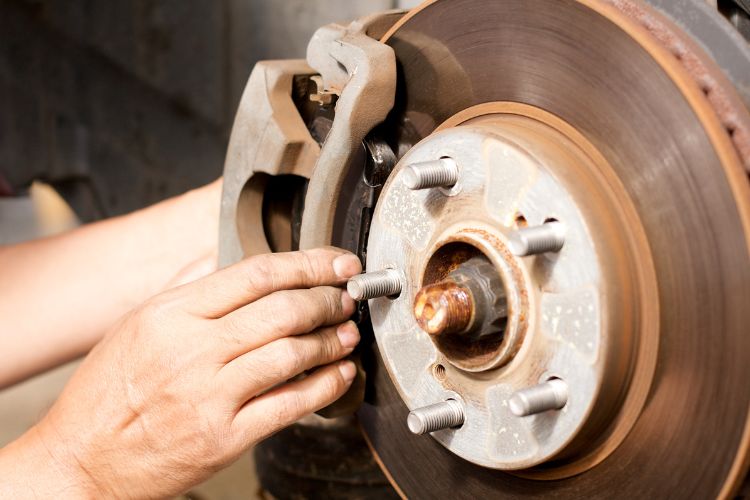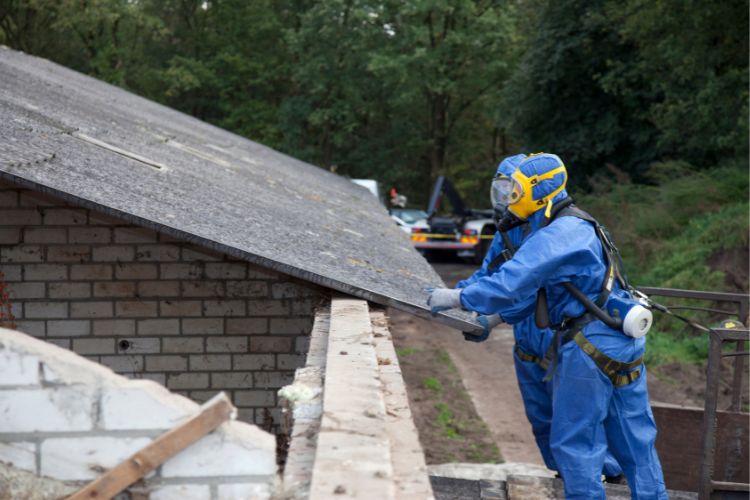It was once used in thousands of different products, but dealing with asbestos is now referred to as playing ‘renovation roulette’.
Many people mistakenly believe asbestos is only a concern in very old houses, but it still exists in approximately one-third of Australian homes. Additionally, it’s probably lurking in places you’d never expect to find it.
In this article, we will discuss what asbestos is, where it is found and how you can get rid of it. We will also look at whether it is safe to add something you suspect contains asbestos into your skip bin with other waste materials.
What is asbestos and where is it found?
Asbestos was once considered an extremely useful material because it was strong, affordable and readily available. The options for the use of this naturally occurring mineral fibre were endless.
Asbestos was used in construction materials such as fibro cement sheeting for walls and splashbacks through to things such as automotive brake pads and clutches. Because it’s an excellent insulator, it was also used in fireproofing, soundproofing and roof insulation. It was used as an underlay in telecommunication pits, pipes, electrical meters, window putty and even in adhesives to install vinyl or timber floors. If your house was built before 1990, you’ll likely find asbestos used somewhere.
In 2003, the use of asbestos was banned in Australia. This is because the health risks it poses greatly outweigh its benefits as a construction material. Exposure to asbestos fibres can cause asbestosis, lung cancer and mesothelioma, as well as other types of cancer.
Products that contain asbestos
Asbestos was used in thousands of products, it can still be found in one-third of Australian homes, particularly if the home is over 30 years old. Here is a list of some common places asbestos can be found:
- Roofing materials, guttering and downpipes
- External cladding and internal walls and cladding
- Drain pipes and surrounds
- Fencing and garden items
- Floor coverings
- In electrical applications
How to identify asbestos
Materials that contain asbestos can be hazardous if they are not maintained properly. This is why many people prefer to remove all traces of asbestos when renovating their homes. There are two types — friable and non-friable. However, both types can release dangerous fibres, which can easily be inhaled.
You can’t tell just by looking at a material if it contains asbestos. It can be a variety of colours and it could have been painted. Therefore, the only way to tell if products contain asbestos is to have them examined and tested by a licensed asbestos assessor.
Health effects of asbestos
Asbestos fibres can become airborne and, if swallowed or inhaled, can cause a disease called mesothelioma. It is an aggressive and deadly form of cancer that affects the tissue that lines the lungs, stomach and heart.
Asbestos can also cause lung cancer or asbestosis, where the lungs are permanently damaged. It can also cause kidney and throat cancer.
Thousands of people die from asbestos-related diseases in Australia each year.
Asbestos regulations in Australia
Perhaps you’re planning on renovating your home. You ordered the materials and hired a skip bin to tidy your site. However, before demolition begins, you should call a licensed professional to check your home for asbestos.
In Australia, you need special training and a licence to remove asbestos, as there are strict regulations around how it is handled and removed and how it is disposed of.
Asbestos removal and disposal
The most common way to dispose of asbestos is to hire a licensed removal company to safely remove and dispose of asbestos.
While homeowners are permitted to remove less than 10m² of asbestos, it is often difficult to do so, as not all waste disposal sites accept asbestos waste, and it cannot be disposed of with normal household waste or in a skip bin with general waste.
Removing asbestos requires many steps, including air monitoring, using special respiratory and personal protection equipment for workers and strict limits on access to the work zone. Your qualified, licenced removalist will then dispose of the asbestos waste in a specially lined skip bin, so it can be easily transported to the appropriate waste facilities.
Remember to keep asbestos out of your skip bin
Asbestos waste or materials that you suspect may contain asbestos cannot be disposed of with normal household waste or in a skip bin with general waste. For this reason, you should ensure that you hire only licenced removalists and have all materials checked for asbestos before demolition begins.
Most skip bin hire companies do not accept hazardous waste materials, such as asbestos, for disposal. You, therefore, need to ensure that it is not being added to your skip bin along with other waste materials where it could endanger the health of others.
For more information on skip bin hire and what can and can’t be disposed of in skips, contact Best Price Skip Bins today.



